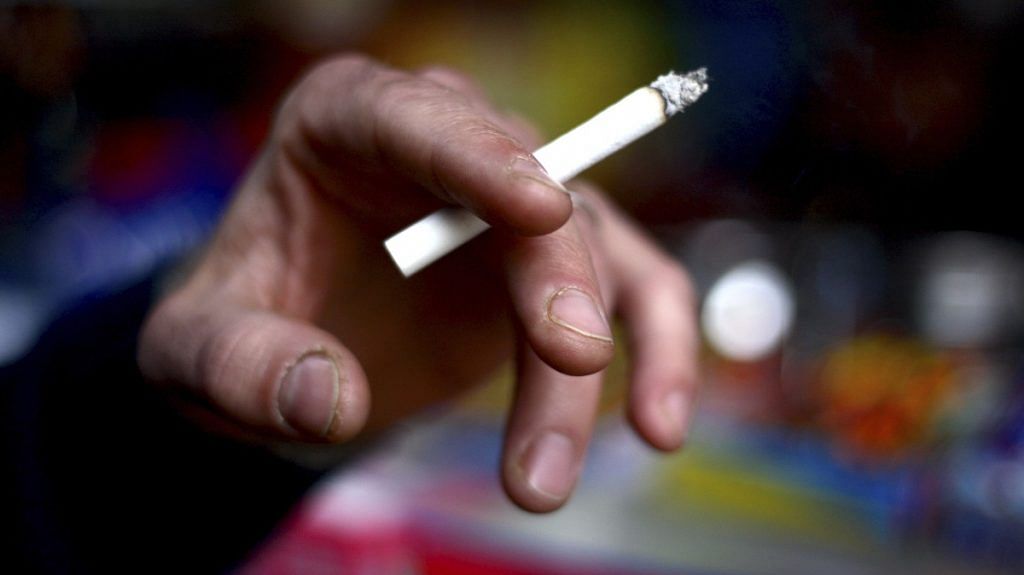- Tobacco kills over 8 million people globally each year – 7 million directly and 1.2 million indirectly.
- In India, the consumption of tobacco and the waste it produces is a real problem.
- Government action is needed to help people quit the habit and force the industry to take responsibility for its environmental impact.
Tobacco kills up to half of its users – more than 8 million people each year. More than 7 million of those deaths are the result of direct tobacco use while around 1.2 million are the result of non-smokers being exposed to second-hand smoke.
The Global Adult Tobacco Survey India, reports that nearly 267 million adults (aged 15 years and above) in India (29% of all adults) are users of tobacco. The total economic costs attributed to tobacco use from all diseases in India in the year 2017-18 for persons aged 35 years and above amounted to $27.5 billion.
As oral surgeons, tobacco use is the most common habit we encounter in our clinical practice. The most prevalent form of tobacco use in India is smokeless tobacco and commonly used products are khaini, gutkha, betel quid with tobacco and zarda. Smoking forms of tobacco used are bidi, cigarettes and hookah. Tobacco use, in any form, is more common in lower socio-economic groups. Chewing products are kept all day and sometimes even all night in the mouth (buccal sulcus or pouch).
Health risks from consuming tobacco
The majority of the patients we see come with the signs and symptoms of tooth decay, tooth loss and periodontal disease, while chronic tobacco chewers manifest pre-cancerous conditions like leukoplakia, commonly called “white patch”, which leads to oral cancer at a later stage.
Chewing tobacco is known to contain at least 28 cancer-causing chemicals, medically known as carcinogens. Smokeless tobacco is linked to several different types of cancer, including cancer of the mouth, oesophagus and pancreas. Attributable risk of oral cancer due to tobacco and alcohol consumption is estimated to be more than 80%.
India accounts for almost one-third of the global incidence of oral cancer. This rate has increased by 68% in the past two decades, making it the most common cancer among Indian males, and this is expected to increase by around 26% in 2030. Approximately 10% of oral cancer patients in low and middle-income countries (LMICs) have a progressive disease that makes them untreatable and they can only be offered palliative care.
India spent approximately $322 million in 2020 on oral cancer treatment and this will mean an economic burden on the country of $3.2 billion over the next 10 years.
Other health risks from tobacco chewing
While oral signs and symptoms of chewing tobacco are prominent, there are equally lethal health risks associated with this habit. Using smokeless tobacco during pregnancy can increase the risk of early delivery and stillbirth. Nicotine in smokeless tobacco products used during pregnancy can affect how a baby’s brain develops before birth. Smokeless tobacco also increases the risk for death from heart disease and stroke and can cause nicotine poisoning in children.
Environmental impact of tobacco
The harmful effects of the tobacco industry on the environment are vast and growing – adding unnecessary pressure to our planet’s already scarce resources and fragile ecosystems. Tobacco growing, manufacturing, and use poisons our water, soil, beaches and city streets with chemicals, toxic waste, cigarette butts, including microplastics, and e-cigarette waste. Around 3.5 million hectares of land are destroyed for tobacco growing each year. Growing tobacco contributes to deforestation, especially in the developing world.
What can we do to prevent tobacco consumption?
We urgently need to reinforce all efforts towards the control of tobacco usage, awareness programmes and early detection.
In 2007, the World Health Organization (WHO) introduced a practical, cost-effective way to scale up implementation of the main demand reduction provisions of the WHO Framework Convention of Tobacco Control (FCTC) on the ground: MPOWER. The six MPOWER measures are:
Monitor tobacco use and prevention policies. Protect people from tobacco use. Offer help to quit tobacco use. Warn about the dangers of tobacco. Enforce bans on tobacco advertising, promotion, and sponsorship. Raise taxes on tobacco.
How is the World Economic Forum enabling an inclusive global health ecosystem?
Smoking cessation contributes to reducing the risk of oral cancers, with a 50% reduction in risk within 5 years. Preventive strategies especially focused on children and adolescents, need to be initiated urgently. This is important for developing countries like India, which have become the main targets of advertisement and promotional propaganda of various multinational tobacco companies.
What about the tobacco industry and farmers?
The tobacco industry is making profits by destroying the environment and needs to be held accountable for the environmental destruction and made to pay for the waste and damages, including to recover the cost of collecting these wastes.
It is also important that governments and policymakers support tobacco farmers to switch to alternative, more sustainable livelihoods to reduce the environmental impact of tobacco growing, curing and manufacturing while continuing to implement tobacco control measures.
Using AI to quit tobacco
Florence is, WHO’s first virtual health worker. Through a series of interactive questions with the user, Florence gets to understand the relationship with tobacco and tailor her responses. With the users input, she creates a “personal quit plan”, drawing from the best available science to offer support and guidance throughout the process.
Reducing tobacco consumption needs to be identified as a key lever for achieving all the Sustainable Development Goals, not just those directly related to health. The onus mainly lies on governments and policymakers to step up legislation, including implementing and strengthening existing schemes to make producers responsible for the environmental and economic costs of tobacco product waste.
This article previously appeared in the World Economic Forum.
Also read: 1.4 million unplanned pregnancies were reported in 2021. Put women’s healthcare on priority
